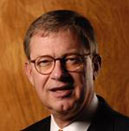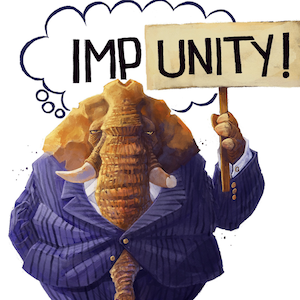Toward a Demotic Republican Party
What happens when a political party becomes demotic? Before answering the question, note that the word in question is not demonic, from the Greek word daimon, meaning a deity (remember that the Greek gods were notoriously jealous and greedy), but demotic, from the Greek word demos, meaning the people -- the same root as democratic.
My question is prompted by the ongoing transformation of the Republican Party, discussed in occasional bits in these columns over the years, with the definitive version set out in Republican political consultant Patrick Ruffini's "Party of the People: Inside the Multiracial Populist Coalition Remaking the GOP."
Ruffini argues convincingly that the classic picture of the two political parties' constituencies -- the Republicans as the party of the rich and ancestral Protestants, the Democrats as the party of the great masses and ethnic and racial minorities -- is out of date. It described the nation emerging from World War II 80 years ago.
It stopped being true by the 1990s, when Bill Clinton's Democrats made major gains among white college graduates clustered in the nation's 50-some million-plus metropolitan areas, which account for about half the nation's population.
But the other half of the nation, rural and small-town America, with few college grads, trended Republican. West Virginia, which hadn't voted for a nonincumbent Republican presidential candidate since 1928, voted for George W. Bush in 2000. Without it, he wouldn't have won, and the nation wouldn't have spent weeks wondering who carried Florida.
This realignment of white college grads (call them gentry liberals) toward Democrats and white noncollege grads (demotics) toward Republicans continued. John Judis and Ruy Teixeira's 2002 book "The Emerging Democratic Majority" predicted that the first trend, if accompanied by new masses of nonwhite immigrants and continued white working-class support, would produce Democratic victories, which happened in 2008.
But it didn't last. Teixeira, in his and Judis' recent book "Where Have All the Democrats Gone?", argues persuasively that as gentry liberals increased their hold on the party, their policy and lingo preferences have repelled first white and then nonwhite demotic voters. Ruffini, citing New York Times analyst Nate Cohn's seminal June 2016 article, points out that there are many more demotic voters than recorded in exit polls. Our press, politicians and political scientists are almost all college graduates; most voters aren't.
Donald Trump won in 2016 by winning over demotic whites who voted for Barack Obama. He nearly won again in 2020 by winning over some demotic nonwhites, many of them new voters. Current polling suggests he is running better with both groups today.
Ruiffini believes, as I do, that American political attitudes arise more from cultural beliefs than economic interests and that nonwhite demotics, like their white counterparts, resent gentry liberals' support of open borders, of defunding the police and of referring to those of Latin origin as "Latinx."
"Cultural divides are what voters vote on even if politicians don't talk about them," Ruffini writes. "Simply ignoring them while gesticulating wildly in the direction of economic populism isn't a viable strategy."
...continued
Copyright 2024 U.S. News and World Report. Distibuted by Creators Syndicate Inc.






